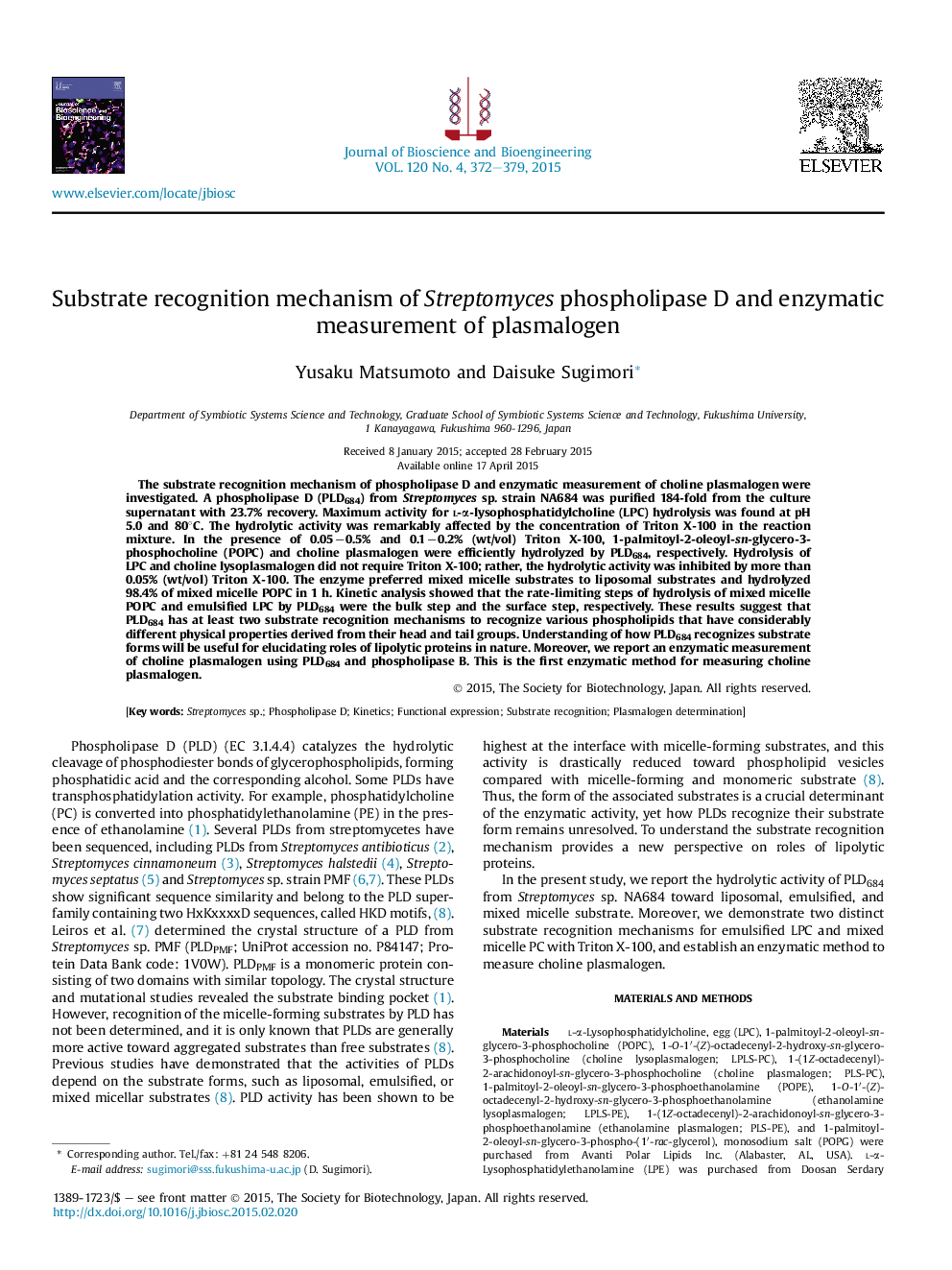| Article ID | Journal | Published Year | Pages | File Type |
|---|---|---|---|---|
| 20146 | Journal of Bioscience and Bioengineering | 2015 | 8 Pages |
The substrate recognition mechanism of phospholipase D and enzymatic measurement of choline plasmalogen were investigated. A phospholipase D (PLD684) from Streptomyces sp. strain NA684 was purified 184-fold from the culture supernatant with 23.7% recovery. Maximum activity for l-α-lysophosphatidylcholine (LPC) hydrolysis was found at pH 5.0 and 80°C. The hydrolytic activity was remarkably affected by the concentration of Triton X-100 in the reaction mixture. In the presence of 0.05−0.5% and 0.1−0.2% (wt/vol) Triton X-100, 1-palmitoyl-2-oleoyl-sn-glycero-3-phosphocholine (POPC) and choline plasmalogen were efficiently hydrolyzed by PLD684, respectively. Hydrolysis of LPC and choline lysoplasmalogen did not require Triton X-100; rather, the hydrolytic activity was inhibited by more than 0.05% (wt/vol) Triton X-100. The enzyme preferred mixed micelle substrates to liposomal substrates and hydrolyzed 98.4% of mixed micelle POPC in 1 h. Kinetic analysis showed that the rate-limiting steps of hydrolysis of mixed micelle POPC and emulsified LPC by PLD684 were the bulk step and the surface step, respectively. These results suggest that PLD684 has at least two substrate recognition mechanisms to recognize various phospholipids that have considerably different physical properties derived from their head and tail groups. Understanding of how PLD684 recognizes substrate forms will be useful for elucidating roles of lipolytic proteins in nature. Moreover, we report an enzymatic measurement of choline plasmalogen using PLD684 and phospholipase B. This is the first enzymatic method for measuring choline plasmalogen.
